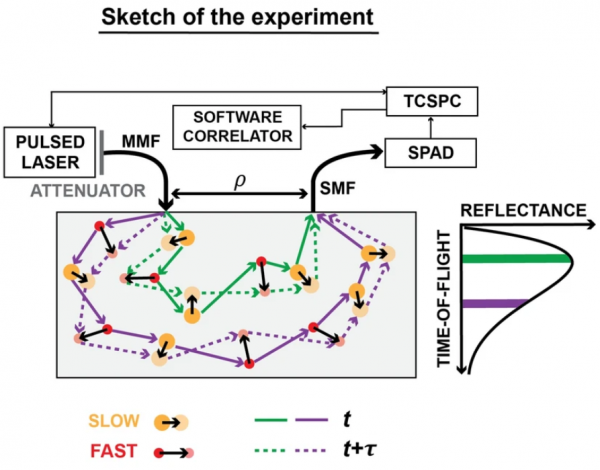Time-domain diffuse correlation spectroscopy (TD-DCS) for noninvasive, depth-dependent blood flow quantification in human tissue in vivo
Scientific Reports 2021 | 11, Article number: 1817
Samaei, S., Sawosz, P., Kacprzak, M., Pastuszak, Ż., Borycki, D., & Liebert, A.
Abstract:
Monitoring of human tissue hemodynamics is invaluable in clinics as the proper blood flow regulates cellular-level metabolism. Time-domain diffuse correlation spectroscopy (TD-DCS) enables noninvasive blood flow measurements by analyzing temporal intensity fluctuations of the scattered light. With time-of-flight (TOF) resolution, TD-DCS should decompose the blood flow at different sample depths. For example, in the human head, it allows us to distinguish blood flows in the scalp, skull, or cortex. However, the tissues are typically polydisperse. So photons with a similar TOF can be scattered from structures that move at different speeds. Here, we introduce a novel approach that takes this problem into account and allows us to quantify the TOF-resolved blood flow of human tissue accurately. We apply this approach to monitor the blood flow index in the human forearm in vivo during the cuff occlusion challenge. We detect depth-dependent reactive hyperemia. Finally, we applied a controllable pressure to the human forehead in vivo to demonstrate that our approach can separate superficial from the deep blood flow. Our results can be beneficial for neuroimaging sensing applications that require short interoptode separation.
Figure: Time-domain diffuse correlation spectroscopy in samples composed of particles moving at different speeds. The light emerging from the source is multiply scattered from slowly (orange), and rapidly (red) moving particles inside the sample, and then reaches the detector.



